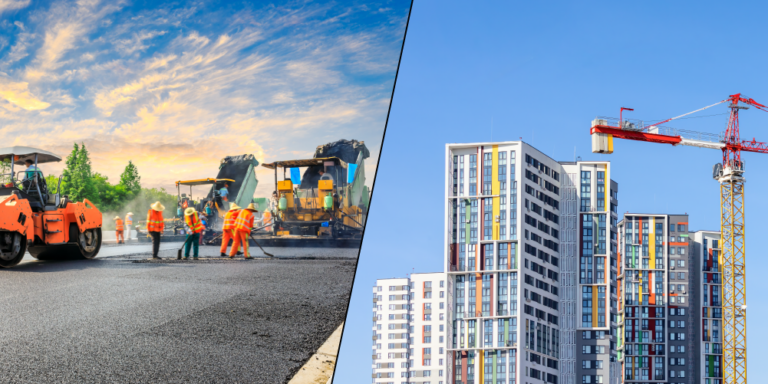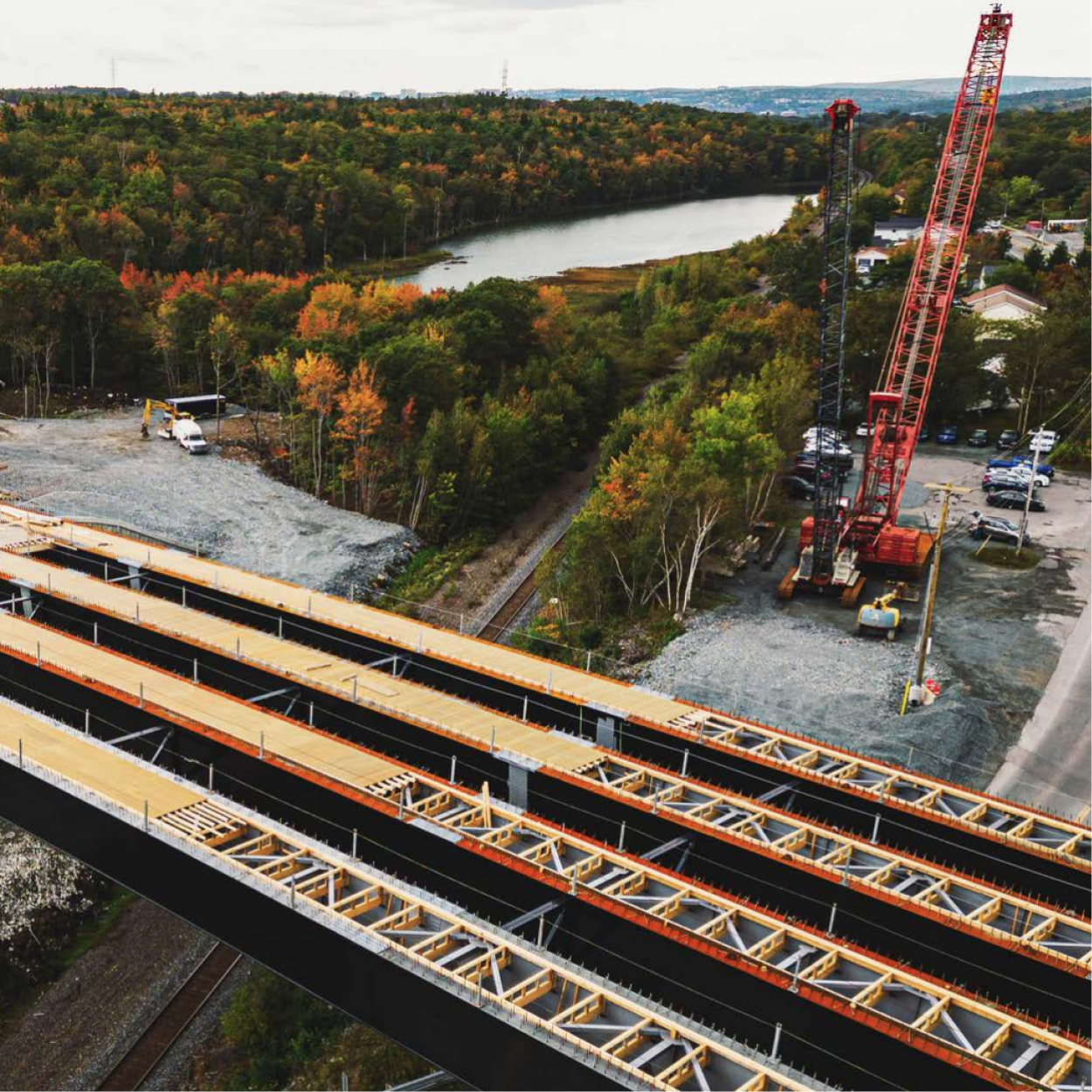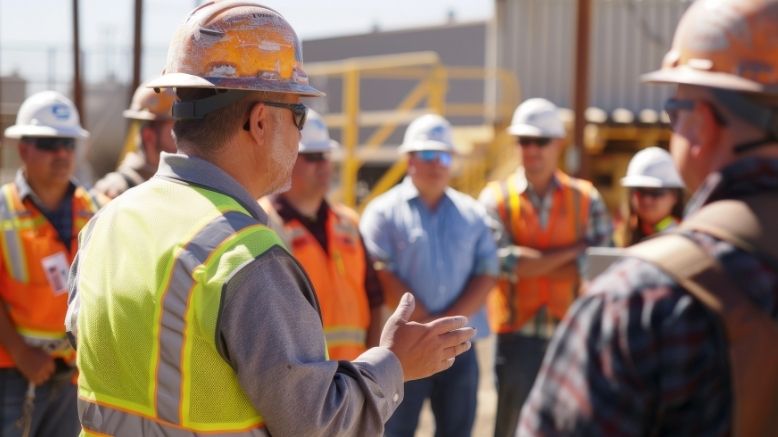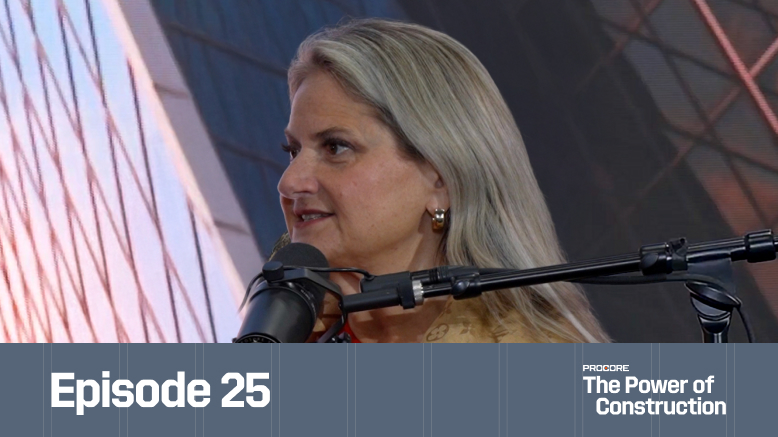— 6 min read
Horizontal vs. Vertical Construction: Their Unique Challenges


Last Updated Aug 7, 2024

Janine Trinidad
Staff Trainer and Program Manager
25 articles
Janine Trinidad is a Construction Educational professional for Procore Technologies. In previous roles, Janine managed all phases of construction on hotel, mixed-use, and institutional projects in the San Francisco Bay area. She was responsible for negotiating contract budgets and change orders, managing RFIs and submittals, and overseeing quality control, among other duties. She is also a certified transformational coach with a focus on women-centered and trauma-informed methods. She is passionate about transforming the construction industry to be a healthier, more successful and welcoming place to work and believes technology and education are allies in doing so.

Trey Strange
Contributing Writer
27 articles
Trey Strange is a Peabody and Emmy-Award winning writer and producer based in Brooklyn, NY. Throughout his career, Trey has worked for the Huffington Post, Houston Chronicle, Out Magazine, Brooklyn Eagle, CNBC, INTO, and New York Magazine's Bedford + Bowery. He received his Masters in Journalism and Middle East studies from New York University, and Bachelors in the same subjects from the University of Houston.
Last Updated Aug 7, 2024

The construction industry often categorizes work as horizontal or vertical. While they certainly have distinct characteristics, these two types of construction are not as isolated as they might first seem.
A general contractor (GC) well-versed in both kinds of construction not only makes their business more marketable but also can implement knowledge from across the gap of these categories. In short, understanding both can help a contractor be a better builder — and might even open up opportunities in their portfolio.
This article will explore the differences between horizontal and vertical construction, including the unique challenges that a contractor may run into when building in either direction.
Table of contents
Examples of Horizontal & Vertical Projects
Both vertical and horizontal construction are often interwoven into the same projects, and we rely on their successful interaction. For example, the two might cross paths on a railway project with a depot or station or a large residential development project with private roads connecting all the buildings and homes.
Horizontal builds typically stretch across the ground. Many of these are considered infrastructure projects that are vast and span several miles. Some examples of horizontal construction projects include:
- Communication infrastructure
Vertical construction projects span upward or downward from the structure’s foundation. These projects include all buildings, skyscrapers and highrises that often define city skylines. It may also include vertical underground work like deep trenching for pipe or cable laying, or driving piles and piers. Many vertical projects are considered commercial construction and are located in both densely populated and rural areas. Examples of vertical projects include:
- Office buildings
Whether extending across vast horizontal expanses or reaching toward vertical heights, each type of project comes with its own distinct challenges and methods.
However, the differences in their execution and planning are nuanced and require specific expertise. Below are some common differences between horizontal and vertical construction.
Top Civil & Infrastructure Trends
Discover insights from over 450 civil and infrastructure professionals on industry trends, challenges, business drivers, and success recommendations.

Management and Coordination
General contractors (GCs) in horizontal construction manage specialty contractors across extensive geographical sites, ensuring transportation and utility infrastructure follow a logical and efficient development path. The work is often repetitive, involving earthmoving, paving, and pipelaying.
In vertical construction, GCs must coordinate the work of numerous subcontractors and specialty trades, such as electricians, plumbers, HVAC technicians, and carpenters, who operate in a layered, stacked environment. Additionally, contractors also have to consider interior design elements, such as paint color, flooring and windows when working on vertical buildings.
Community Impact
Both horizontal and vertical construction projects deal with the challenges of minimizing impact on nearby communities. Planning ahead and collaborating with municipalities is necessary, obtaining required permits, and providing notice to the public when possible can help minimize frustration and help keep both workers and community members safer.
Traffic Disruptions
Horizontal construction projects, such as freeways may cause major disruptions to traffic flow with detours or ongoing highway closures. Educating the public about these changes is challenging, similar to when a new bridge or road first opens.
Vertical construction projects tend to have a smaller footprint in terms of their impact on surrounding thoroughfares since the work areas are generally more contained.
Weather
Given the scale and nature of horizontal projects being exposed to the elements for the duration of the project, weather unpredictability can also impact progress. Vertical projects are also subject to inclement weather until the roof and exterior walls are constructed.
Heavy rain can cause flooding or soil erosion onsite, similarly cold weather introduces the risk of ground frost, which can hinder ground excavation and laying foundations. Extreme heat can affect both the health and safety of construction workers and the integrity of certain material.
Project management plans should include contingencies for inclement weather. This involves scheduling work during seasons with more favorable conditions when possible, and equipping sites with necessary materials and equipment to protect workers against the elements, such as temporary shelters, heating elements, and proper PPE.
Working With AHJs Regulations
Generally, horizontal projects are often publicly indeed and serve broader public spaces. Because of this, they may have to comply with changes in political climate and regulations mandated by local, state and federal authorities having jurisdiction (AHJs). This can include OSHA or the U.S. Department of Transportation.
Vertical construction projects may have to deal with AHJs on a local level, unless also a public project. A city buildings department may issue permits for construction work, execute final inspections and issue the certificate of occupancy once the structure is complete.
Jobsite
Contractors may face several different challenges when it comes to navigating horizontal and vertical construction sites. On jobsites, access, logistics as well as site safety are issues each type of project will have to consider in unique ways.
Access
Horizontal projects that take place in rural areas may be difficult to access, especially when new roads or infrastructure is built in undeveloped regions. Additionally, maintenance on existing structures can pose a challenge when it occurs along active highways or bridges.
For vertical projects in urban areas, navigating tight spaces that may be at the center of a densely populated area can make it difficult for equipment and materials to be delivered to the site.
Because horizontal projects span such a large area, the jobsite hub may change according to the location of where certain work is performed.
Safety
There are unique safety considerations that have to be evaluated for each type of project. For horizontal construction, traffic hazards along roadways is a major issue. Contractors should make sure signage is placed in the proper areas and that workers are wearing appropriate PPE that makes them visible to drivers.
On vertical projects, workers are more subject to falls from heights and working in confined spaces. Following OSHA guidelines for installing fall protection equipment and conducting trainings for anyone working in a confined space should be prioritized.
Stay updated on what’s happening in construction.
Subscribe to Blueprint, Procore’s free construction newsletter, to get content from industry experts delivered straight to your inbox.

Vertical and Horizontal Construction: Working Together to Build the World
Nowadays, it’s not uncommon for some larger general contracting companies to have both a horizontal and vertical construction department. These two departments can cross-collaborate on larger developments, such as connecting a residential community to water infrastructure or building private roads in a new subdivision.
As construction continues to evolve and the lines surrounding horizontal and vertical projects becomes more intertwined, a good contractor should be well-rounded in both types. This can help GCs be more marketable to win bids, more comprehensive and accurate in their estimating, and progress collaborative efforts on projects that may require components from both areas of construction.
Was this article helpful?
Thank you for your submission.
78%
22%
You voted that this article was . Was this a mistake? If so, change your vote
Scroll less, learn more about construction.
Subscribe to The Blueprint, Procore’s construction newsletter, to get content from industry experts delivered straight to your inbox.
By clicking this button, you agree to our Privacy Notice and Terms of Service.
Thank you!
You’re signed up to receive The Blueprint newsletter from Procore. You can unsubscribe at any time.
Categories:
Written by

Janine Trinidad
Staff Trainer and Program Manager | Procore Technologies
25 articles
Janine Trinidad is a Construction Educational professional for Procore Technologies. In previous roles, Janine managed all phases of construction on hotel, mixed-use, and institutional projects in the San Francisco Bay area. She was responsible for negotiating contract budgets and change orders, managing RFIs and submittals, and overseeing quality control, among other duties. She is also a certified transformational coach with a focus on women-centered and trauma-informed methods. She is passionate about transforming the construction industry to be a healthier, more successful and welcoming place to work and believes technology and education are allies in doing so.
View profile
Trey Strange
Contributing Writer
27 articles
Trey Strange is a Peabody and Emmy-Award winning writer and producer based in Brooklyn, NY. Throughout his career, Trey has worked for the Huffington Post, Houston Chronicle, Out Magazine, Brooklyn Eagle, CNBC, INTO, and New York Magazine's Bedford + Bowery. He received his Masters in Journalism and Middle East studies from New York University, and Bachelors in the same subjects from the University of Houston.
View profileExplore more helpful resources

Profit from Predictability: Construction Software as a Business Strategy
For general contractors, managing complex, multi-million-dollar projects, every project phase — from planning and budgeting to on-site execution — is an opportunity to lose time and money. Construction software is...

Defending Against Financial & Legal Risks on Megaprojects
The construction industry has seen marked growth in megaprojects. Some experts classify any project over $500 million as a megaproject, while others argue that the build needs to be $1...

Unlocking Project Intelligence: Moving from Raw Data to Actionable Insights
The construction industry faces a wide range of challenges, from ongoing labor shortages to frequent cost overruns. But some the biggest hurdles all stem from unpredictability. The general contractors (GCs)...

Who is accountable for innovation in construction?
Everyone says construction needs to innovate—but no one agrees on who’s actually responsible for making it happen. Is it the owner? The builders? The tech vendor? Or is innovation everyone’s...
Free Tools
Calculators
Use our calculators to estimate the cost of construction materials for your next project.
Templates
Find a template to help you with your construction project tasks.
Material Price Tracker
Get the latest U.S. retail prices and view historical trends for common building materials.
Glossary
Explore key terms and phrases used in the industry.
